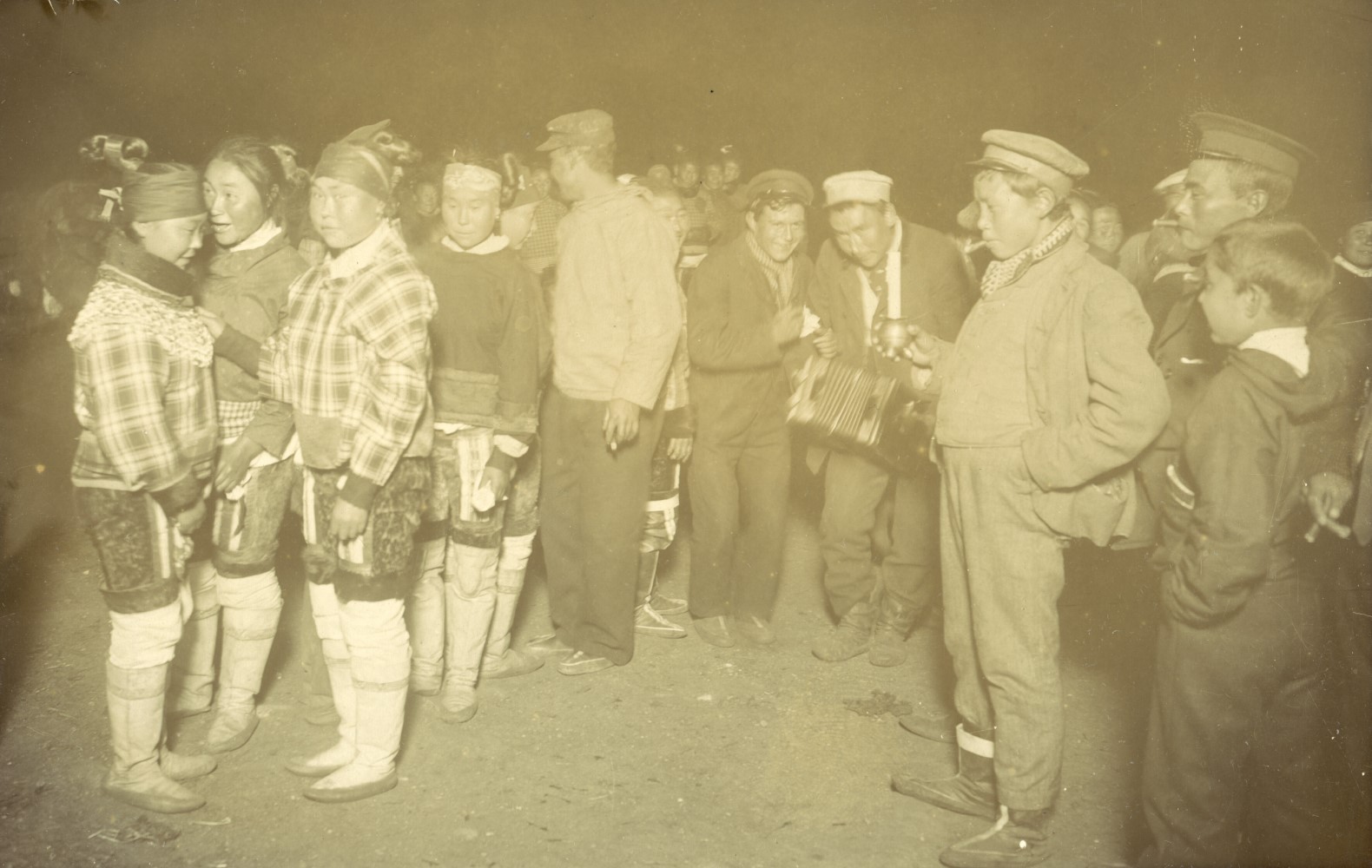
ARKTISK INSTITUT, 1880
Foreign whalers were the first to bring European instruments, music and dance to Greenland. The Inuit traded with the whalers, and the cultural meeting laid the foundation for the dance tradition kalattuut, ‘Greenlandic style’. It was probably mainly the fast-paced two-part reel that was played and danced in 1585, which is when it is first heard of on Greenlandic soil.
From 1721, more and more Danish and Norwegian officials were sent out, and some of them brought melodies and dances from their homelands. The local traditions therefore differ quite a lot, but also have clear common features.
Kalattuut can be danced as quadrille, circle and line dances. There used to be considerably more dances than there are today, but since there has been no tradition of writing down notes and steps, many have been lost.
The two most popular kalattuut, polka and two-step, came to Greenland during the 1850s. They are played and danced enthusiastically in all parts of the country, both for national costume performances and often as a festive feature during gatherings and celebrations.
Particularly the violin and the two-row accordion have been the instruments of choice; today the music is often recorded.
Two distinctive features of kalattuut are the incredibly fast pace and some gender-specific steps. The men dance very fast stomping steps, while the women have gliding steps.
Further reading
- Drum dance and drum song
- Inuit way of life
- Music
- The colonial period until the war years
- The Inuit culture, precolonial period
- Theatre and dance
- Traditions and tales
Read more about Culture in Greenland
